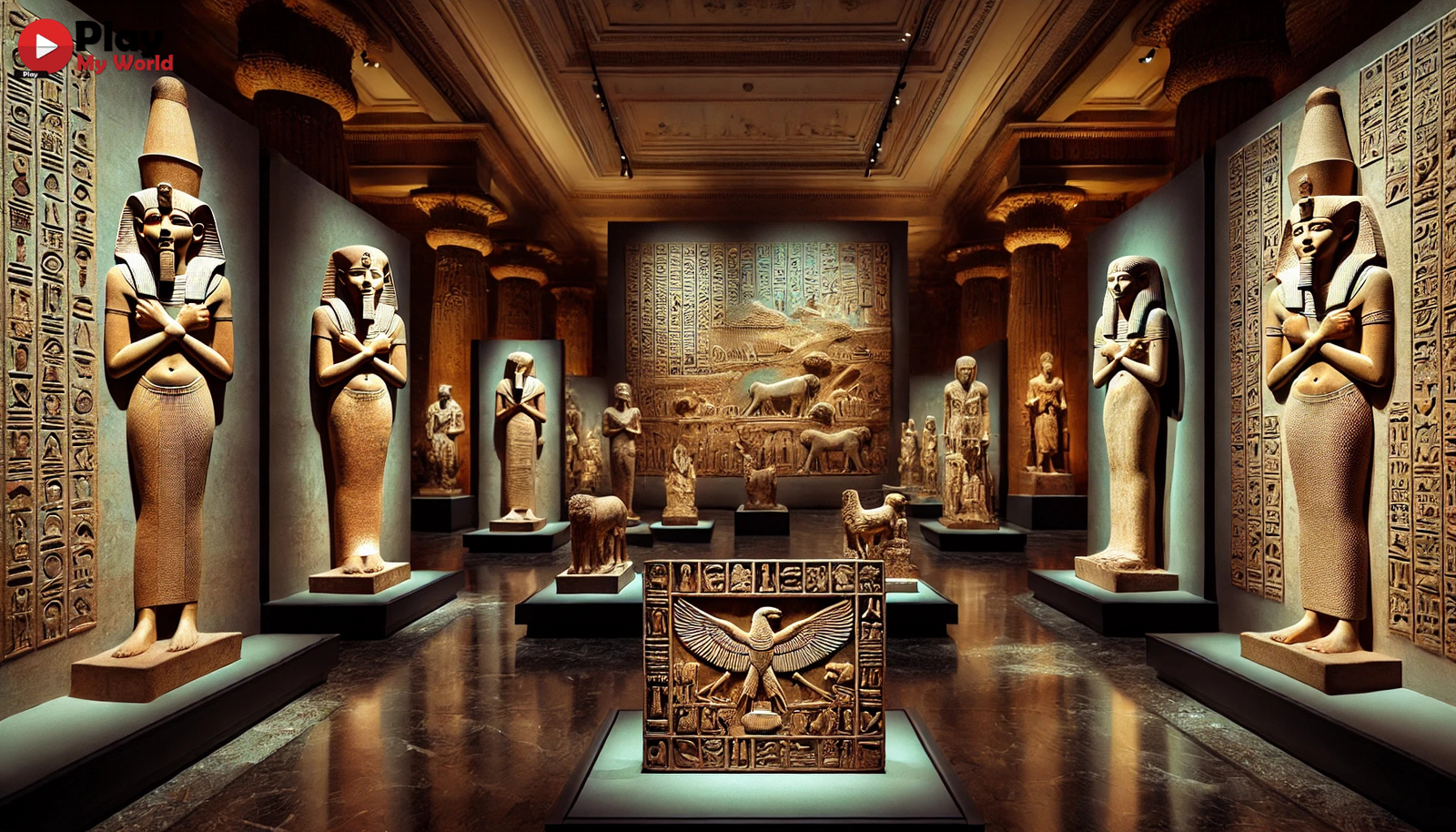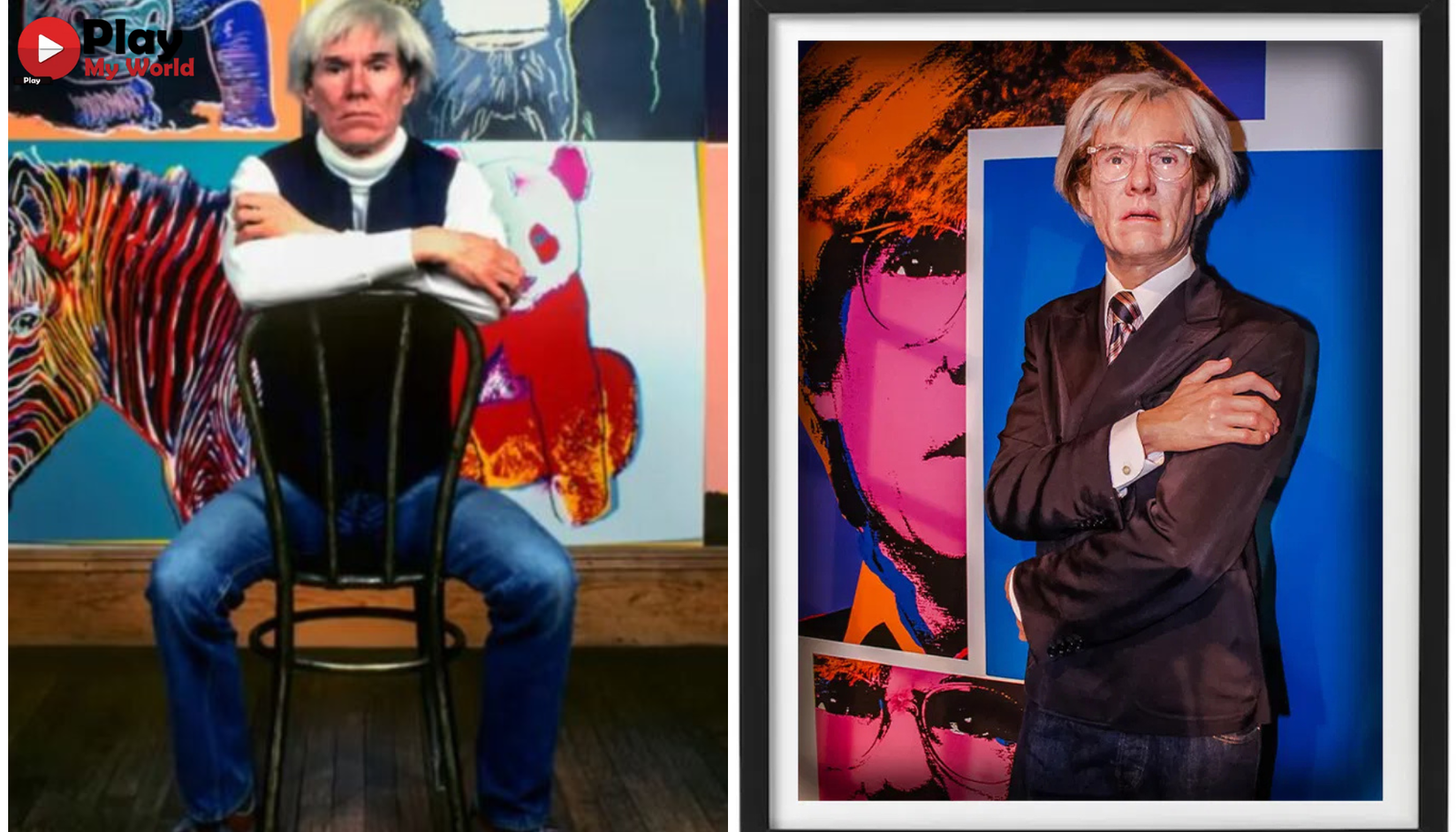Introduction
Art has been an essential part of human civilization for thousands of years, serving as a medium for communication, storytelling, and cultural preservation. The term Ancient Artz refers to the diverse range of artistic expressions from early human societies, spanning cave paintings, sculptures, pottery, architecture, and symbolic representations found in various civilizations.
Studying ancient art is crucial because it provides a glimpse into the beliefs, traditions, and lifestyles of past cultures. From the realistic sculptures of ancient Greece to the mystical hieroglyphs of Egypt, each form of art reflects the values and advancements of its time. Understanding ancient art helps us appreciate how creativity evolved and how its influence continues in modern art, architecture, and design.
Origins and Evolution of Ancient Art
Prehistoric Art: The Dawn of Human Creativity
The earliest evidence of artistic expression dates back to the Paleolithic period (40,000 – 10,000 BCE), when early humans created cave paintings, engravings, and small figurines.
Key Characteristics of Prehistoric Art
- Cave Paintings: Found in Lascaux Cave (France) and Altamira Cave (Spain), depicting animals and hunting scenes.
- Venus Figurines: Small sculptures like the Venus of Willendorf, representing fertility and life.
- Use of Natural Materials: Pigments from minerals, charcoal, and bones were used for coloring and carving.
These artworks were likely used for ritualistic, spiritual, and storytelling purposes, offering insights into the early human connection with nature and survival.
Mesopotamian Art: The First Civilizations
Mesopotamia, known as the Cradle of Civilization, was home to the Sumerians, Akkadians, Babylonians, and Assyrians. Their art reflected their religious devotion, political power, and societal structures.
Key Contributions of Mesopotamian Art
- Cuneiform Writing: One of the earliest forms of written language, engraved on clay tablets.
- Ziggurats: Massive stepped temples dedicated to gods, showcasing architectural ingenuity.
- Cylinder Seals: Small engraved stones used for stamping official documents and artwork.
- Stelae and Reliefs: Sculpted stone panels depicting rulers and battle scenes, such as the Victory Stele of Naram-Sin.
Mesopotamian art was deeply intertwined with governance and mythology, with many artworks serving as records of conquests, divine worship, and administrative control.
Ancient Egyptian Art: The Art of Immortality
Egyptian art, spanning over 3,000 years, was highly symbolic and focused on spiritual beliefs, the afterlife, and divine rulers.
Key Features of Egyptian Art
- Hieroglyphics: Picture-based writing used in tombs and religious texts, such as the Book of the Dead.
- Pyramids and Temples: Architectural masterpieces like the Great Pyramid of Giza reflected their expertise in engineering and sacred geometry.
- Funerary Masks and Sarcophagi: Used in mummification rituals, the gold mask of Tutankhamun is one of the most famous artifacts.
- Stylized Paintings and Sculptures: Pharaohs were depicted in rigid, idealized poses to signify their divine status.
Egyptian art was not only decorative but also functional, playing a vital role in religious practices and the belief in life after death.
Also Read: Exploring callscroll.com#: Your Complete Guide to Health, Wellness, and Balance
Greek and Roman Art: Foundations of Western Art
The Greeks and Romans transformed ancient art by focusing on human realism, proportion, and innovation in architecture.
Ancient Greek Art
- Sculptures: Idealized human forms, seen in masterpieces like Venus de Milo and Discobolus.
- Pottery and Mosaics: Decorative storytelling through red and black-figure pottery.
- Architecture: The introduction of Doric, Ionic, and Corinthian columns, exemplified in the Parthenon.
Ancient Roman Art
- Realistic Portrait Sculptures: Unlike Greek idealism, Romans emphasized individual features and expressions.
- Mosaics and Frescoes: Used to decorate homes and public spaces, particularly in Pompeii and Herculaneum.
- Colosseum and Pantheon: Monumental architecture showcasing advanced engineering skills.
The Greek and Roman contributions shaped the development of Western art, influencing styles from the Renaissance to modern-day architecture.
Forms and Purposes of Ancient Art
Ancient art served multiple functions, extending beyond aesthetics:
Religious and Mythological Art
Art played a major role in spirituality and mythological storytelling.
- Egyptian tomb paintings depicted journeys to the afterlife.
- Hindu temple carvings illustrated gods and cosmic stories.
- Mayan codices recorded religious ceremonies and astronomical events.
Political and Propaganda Art
Rulers used art to showcase power and legitimacy.
- Roman Emperor statues symbolized strength and divinity.
- The Victory Stele of Naram-Sin depicted a king’s military success.
- Chinese Terracotta Army represented Emperor Qin Shi Huang’s army in the afterlife.
Everyday Life and Decorative Art
Art was also found in daily objects, such as:
- Pottery and jewelry in Mesopotamia and Greece.
- Textile patterns in ancient China and India.
- Household murals and carvings in Rome and Persia.
Step-by-Step Guide: How Ancient Artists Created Their Masterpieces
- Choosing Materials: Stone, clay, metal, wood, and natural pigments were sourced.
- Sketching the Design: Early artists used charcoal or wax for outlines.
- Carving and Molding: Statues were sculpted using chisels, hammers, and metal tools.
- Painting and Decorating: Natural dyes were mixed with egg yolk (tempera) or applied as frescoes.
- Sealing and Finishing: Artworks were coated with resin, lacquer, or wax for durability.
These methods varied across civilizations but showcased early human ingenuity and craftsmanship.
The Lasting Influence of Ancient Artz
The legacy of ancient art is visible in today’s world, influencing:
- Neoclassical Architecture: Modern buildings inspired by Greek and Roman styles.
- Tattoo Art and Symbolism: Designs from Celtic, Egyptian, and Polynesian traditions.
- Renaissance Art: Michelangelo and da Vinci revived techniques from Greek sculptures.
- Hollywood and Pop Culture: Mythology, ancient symbols, and artifacts are widely used in movies and literature.
Ancient artistic principles continue to shape contemporary art, design, and storytelling, proving their timeless significance.
Conclusion
Ancient artz represents a visual history of human civilization, capturing the beliefs, achievements, and daily life of our ancestors. From prehistoric cave paintings to grand Roman architecture, each civilization left a unique artistic legacy that continues to inspire and educate modern societies.
Understanding ancient art helps us appreciate the evolution of creativity, culture, and technological advancements. Whether in a museum, historical site, or a modern adaptation, ancient art remains a timeless bridge between the past and present, showcasing the enduring power of human imagination and expression.
Also Read: Hitlmila: A Comprehensive Guide to Its Meaning, Impact, and Applications
Frequently Asked Questions (FAQs) About Ancient Artz
What is Ancient Artz?
Ancient Artz refers to the artistic expressions of early human civilizations, including cave paintings, sculptures, pottery, architecture, and symbolic carvings. These artworks provide valuable insights into the cultural, religious, and social practices of ancient societies, such as the Egyptians, Greeks, Romans, and Mesopotamians.
What are the main types of ancient art?
Ancient art is diverse and includes several forms, such as:
- Prehistoric Art: Cave paintings, rock carvings, and Venus figurines.
- Mesopotamian Art: Ziggurats, cuneiform writing, and relief sculptures.
- Egyptian Art: Hieroglyphics, tomb paintings, pyramids, and statues of pharaohs.
- Greek and Roman Art: Realistic sculptures, pottery, frescoes, and monumental architecture.
- Asian and Indigenous Art: Calligraphy, jade carvings, temple paintings, and tribal art.
What was the purpose of ancient art?
Ancient art served multiple functions beyond aesthetics, including:
- Religious and spiritual significance: Depicting gods, rituals, and afterlife beliefs (e.g., Egyptian tomb art).
- Political propaganda: Showcasing the power of rulers and empires (e.g., Roman emperor statues).
- Storytelling and record-keeping: Documenting history, mythology, and events (e.g., Greek pottery, Mayan codices).
- Everyday life and decoration: Used in homes, clothing, and personal objects (e.g., Mesopotamian cylinder seals, Roman mosaics).
How did ancient artists create their artworks?
Ancient artists followed specific techniques and methods, depending on their region and materials. The general process included:
- Sourcing materials: Using clay, stone, wood, metal, and natural pigments.
- Sketching or engraving designs: Initial outlines were drawn or carved.
- Sculpting or molding: Stone was chiseled, and clay was shaped.
- Painting and decorating: Colors were applied using natural dyes, egg tempera, or fresco techniques.
- Sealing and preserving: Wax, resins, or glazes were used to protect artworks.
How does ancient art influence modern culture?
Ancient art continues to inspire modern artists, architects, and designers. Some examples include:
- Neoclassical architecture: Government buildings and museums are inspired by Greek and Roman structures.
- Tattoo and body art: Many traditional tattoo symbols come from ancient cultures like the Celts and Egyptians.
- Renaissance and contemporary art: Techniques from Greek and Roman sculpture were revived during the Renaissance.
- Movies, books, and fashion: Ancient myths, symbols, and motifs appear in modern media and design.
Ancient art remains a powerful link between past and present, influencing the way we create, express, and interpret visual culture today.



